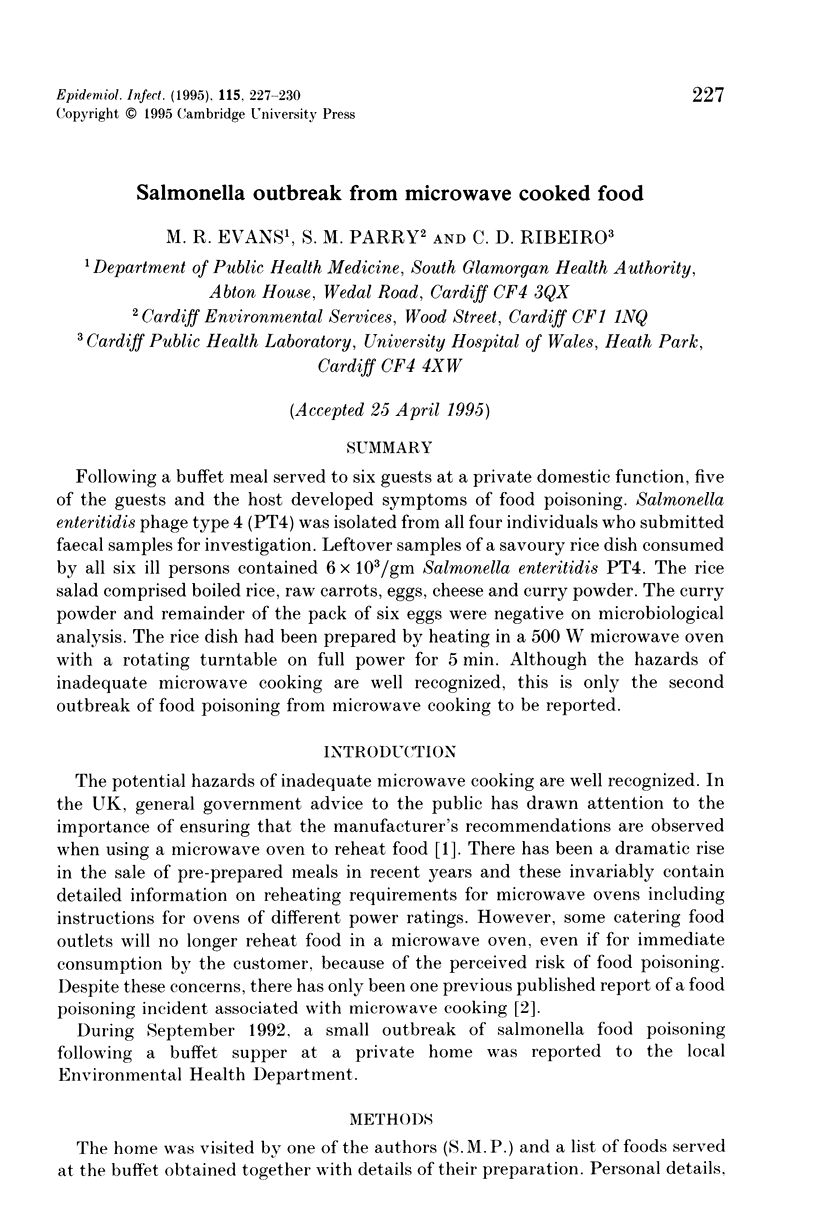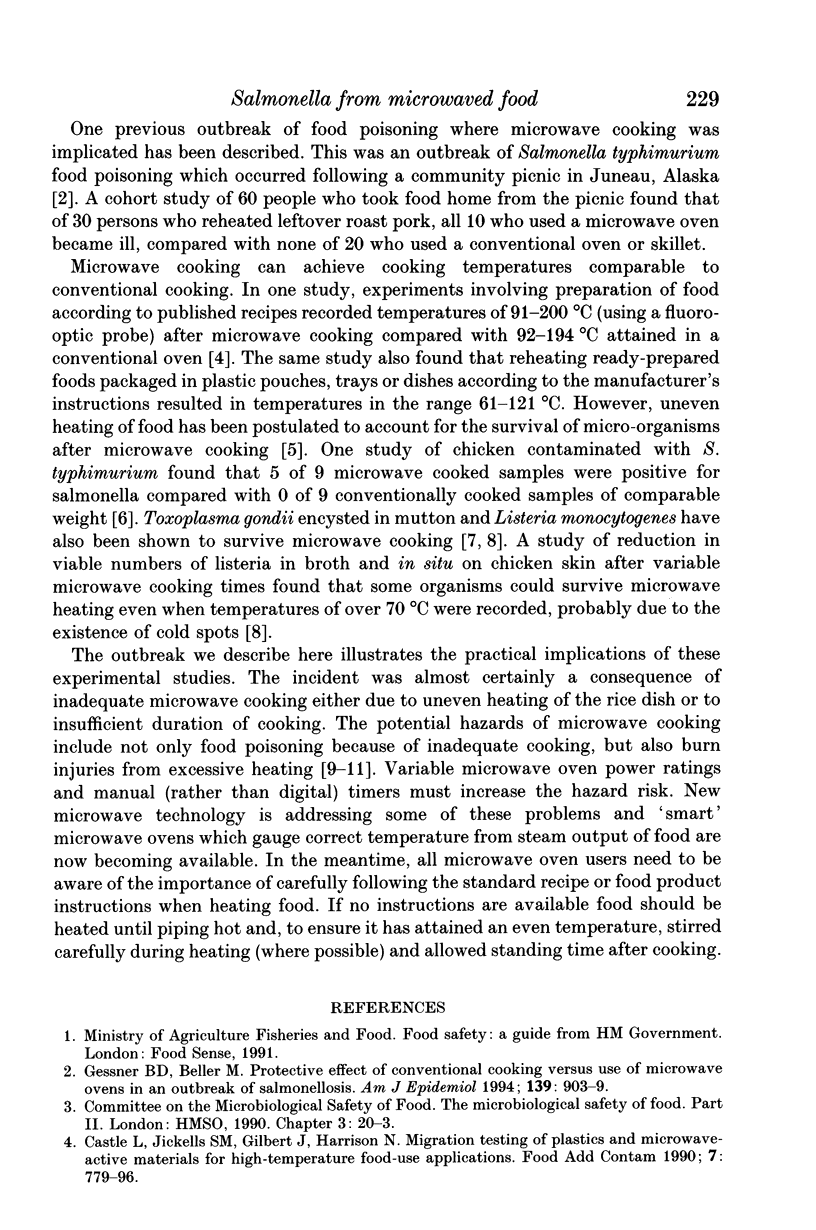Abstract
Following a buffet meal served to six guests at a private domestic function, five of the guests and the host developed symptoms of food poisoning. Salmonella enteritidis phage type 4 (PT4) was isolated from all four individuals who submitted faecal samples for investigation. Leftover samples of a savoury rice dish consumed by all six ill persons contained 6 x 10(3)/gm Salmonella enteritidis PT4. The rice salad comprised boiled rice, raw carrots, eggs, cheese and curry powder. The curry powder and remainder of the pack of six eggs were negative on microbiological analysis. The rice dish had been prepared by heating in a 500 W microwave oven with a rotating turntable on full power for 5 min. Although the hazards of inadequate microwave cooking are well recognized, this is only the second outbreak of food poisoning from microwave cooking to be reported.
Full text
PDF



Selected References
These references are in PubMed. This may not be the complete list of references from this article.
- Castle L., Jickells S. M., Gilbert J., Harrison N. Migration testing of plastics and microwave-active materials for high-temperature food-use applications. Food Addit Contam. 1990 Nov-Dec;7(6):779–796. doi: 10.1080/02652039009373940. [DOI] [PubMed] [Google Scholar]
- Coote P. J., Holyoak C. D., Cole M. B. Thermal inactivation of Listeria monocytogenes during a process simulating temperatures achieved during microwave heating. J Appl Bacteriol. 1991 Jun;70(6):489–494. doi: 10.1111/j.1365-2672.1991.tb02745.x. [DOI] [PubMed] [Google Scholar]
- Corridan P., Hsuan J., Price N. J., McDonnell P. J. Exploding microwaved eggs. BMJ. 1992 Apr 18;304(6833):1053–1053. doi: 10.1136/bmj.304.6833.1053-a. [DOI] [PMC free article] [PubMed] [Google Scholar]
- Ford G. R., Horrocks C. L. Hazards of microwave cooking: direct thermal damage to the pharynx and larynx. J Laryngol Otol. 1994 Jun;108(6):509–510. doi: 10.1017/s0022215100127264. [DOI] [PubMed] [Google Scholar]
- Gessner B. D., Beller M. Protective effect of conventional cooking versus use of microwave ovens in an outbreak of salmonellosis. Am J Epidemiol. 1994 May 1;139(9):903–909. doi: 10.1093/oxfordjournals.aje.a117096. [DOI] [PubMed] [Google Scholar]
- Lindsay R. E., Krissinger W. A., Fields B. F. Microwave vs. conventional oven cooking of chicken: relationship of internal temperature to surface contamination by Salmonella typhimurium. J Am Diet Assoc. 1986 Mar;86(3):373–374. [PubMed] [Google Scholar]
- Lundén A., Uggla A. Infectivity of Toxoplasma gondii in mutton following curing, smoking, freezing or microwave cooking. Int J Food Microbiol. 1992 Mar-Apr;15(3-4):357–363. doi: 10.1016/0168-1605(92)90069-f. [DOI] [PubMed] [Google Scholar]


